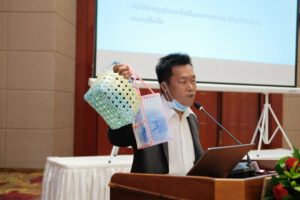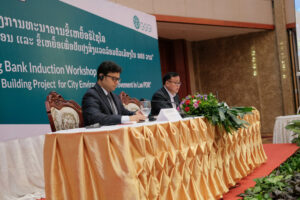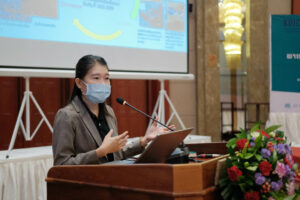Vientiane Capital, Lao PDR. On September 27, GGGI together with Vientiane City Office for Management Services (VCOMS) organized an induction workshop of Waste Recycling Bank (WRB) project’s scale-up phase. Attended by more than 100 participants from KOICA, central, city, and local governments, schools, development partners, and waste collection/recycling companies, the induction workshop announced the commencement of the WRB scale-up phase by introducing the project to over 60 new schools and by providing the instruction on school-led project management.
The induction workshop was highly productive with useful comments and suggestions shared by central and city governments, KOICA, waste collection companies, and a development partner, which highlighted the necessity of sustainable waste management, circular economy, and the roles of the schools. 10 schools of the WRB initial phase also shared their experiences and know-hows accumulated since beginning of the project for the new schools.
WRB scale-up phase starts from October with GGGI’s waste bin handover ceremonies and awareness-raising activities at each school. Apart from waste bins, additional materials such as waste bags, weight scales, and bank books will also be provided to the schools. The awareness-raising activities will focus on waste management, environment protection, and waste recycling, aiming at encouraging students to actively participate in WRB. In addition, a mobile application will be an additional feature of the scale-up phase, which will facilitate the waste collection service provision by the waste collection companies.
Started in 2020 with financial support from Korea International Cooperation Agency (KOICA), the WRB project was launched to strengthen the value chain of the recyclable waste in Vientiane Capital by establishing waste collection points at schools. The students are encouraged to bring recyclable materials to the waste recycling banks at their schools and their contributions are recorded on their bank books, while the collected materials are sold to waste collection companies. This approach not only raised the awareness of the students, but also supported each school to gain additional financial revenue which can be used to benefit the students.



